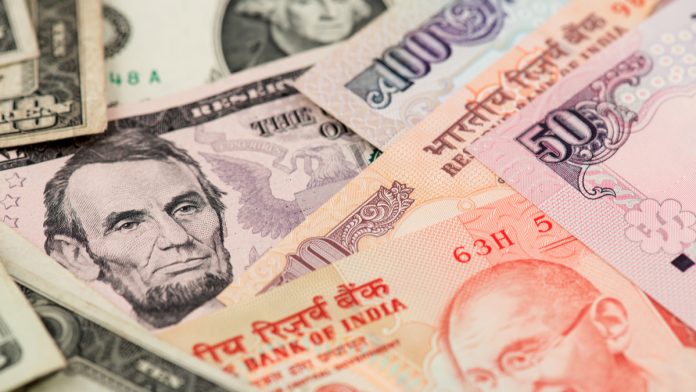- Indian Rupee (INR) rises for a third day
- Indian budget showed restraint
- US Dollar (USD) falls after gains yesterday
- Fed left rates unchanged
The US Dollar Indian Rupee (USD/INR) exchange rate is falling for a third straight day. The pair fell -0.03% in the previous session, settling on Thursday at 83.09. At 16:00 UTC, USD/INR trades -0.15% at 82.97 and trades in a range of 82.92 to 83.08.
The Indian Rupee is pushing higher factory growth, which hit a four-month high in January thanks to strong demand and an upbeat year-ahead outlook.
India’s manufacturing PMI rose to 56.5 in January from December’s 18-month low of 54.9. The data comes amid expectations that India will remain the fastest-growing major economy this year, boosted by government spending.
Meanwhile, India’s budget showed that Prime Minister Narendra Modi’s government resisted the urge to spend trillions ahead of the elections later this year.
The US Dollar is falling across the board. The US Dollar Index, which measures the greenback versus a basket of major currencies, trades at -0.14% at the time of writing at 103.42, after gains in the previous session.
The US dollar is falling after gains in the previous session as investors digest the latest jobs data ahead of Friday’s non-farm payroll report.
US jobless claims unexpectedly rose to 224K up from 215K in the previous week. Meanwhile, the challenger job cuts increased to 82.3 K, up from 34.8K in December. The slight weakening in U.S. jobs data comes after ADP private payrolls yesterday showed that job creation was lower than expected at 107K, down from 158K.
The figures come ahead of tomorrow’s all-important non-farm payroll report, in which investors will be watching for signs that the US jobs market is starting to cool as interest rates remain at 22 22-year high.
The data comes after the Federal Reserve interest rate decision yesterday, where the Fed left rates unchanged for a fourth straight month. Federal Reserve chair Jerome Powell pushed back on expectations of a March interest rate cut.
The market is now pricing in just a 35% probability of a rate cut in March and is almost fully pricing in a Fed rate cut in May.





